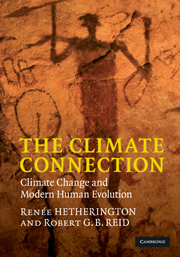Preface
Published online by Cambridge University Press: 05 August 2012
Summary
Another beautiful sunny summer day has dawned on Canada's west coast. Gulls glide across the cloud-speckled blue sky. Eagles dive, plucking their dinner from the cool ocean. Children play on the beach, clams squirting their bare legs. It is an idyllic paradise. Striations on the bedrock are evidence of the two-kilometre-thick ice sheet that blanketed this land fifteen thousand years ago. Soon after, aboriginal people lived and played on these beaches leaving behind deep clam-laden middens and stone tools.
Yet, storm clouds brew on the horizon. When we look back on Earth's climate over the last 135,000 years it is clear that climate change is not new but is part of the natural change ubiquitous in Earth's history. Long, long before land- and sea-ice covered the northern hemisphere palm trees grew in the Arctic. Yet even within these cycles, that oscillate between warm and cold, there have been occasions when climate changed rapidly. These events often coincided with the extinction of once-dominant species and rapid, saltatory evolution of others. Thus, it is important to understand the role climate change has and continues to play in the evolution of our species, particularly as we face future climate change.
Adaptation and adaptability are hopelessly confused in the public mind, as well as in the writings of anthropologists and archaeologists. The adaptations with which neo-Darwinists work are random, genetically fixed mutations that require the approval of natural selection to become general species characteristics.
- Type
- Chapter
- Information
- The Climate ConnectionClimate Change and Modern Human Evolution, pp. xv - xviPublisher: Cambridge University PressPrint publication year: 2010



